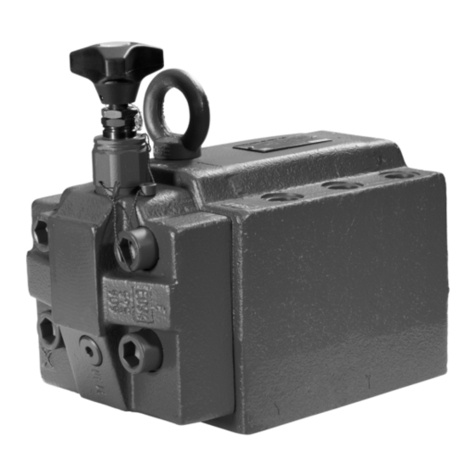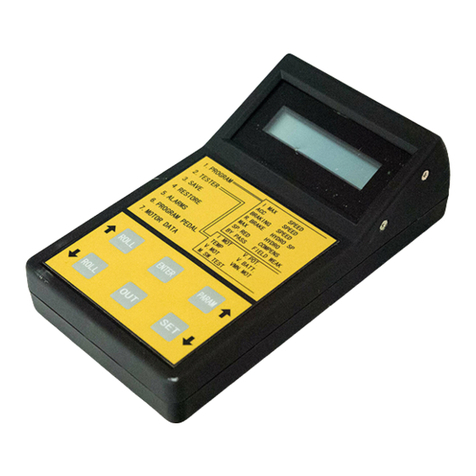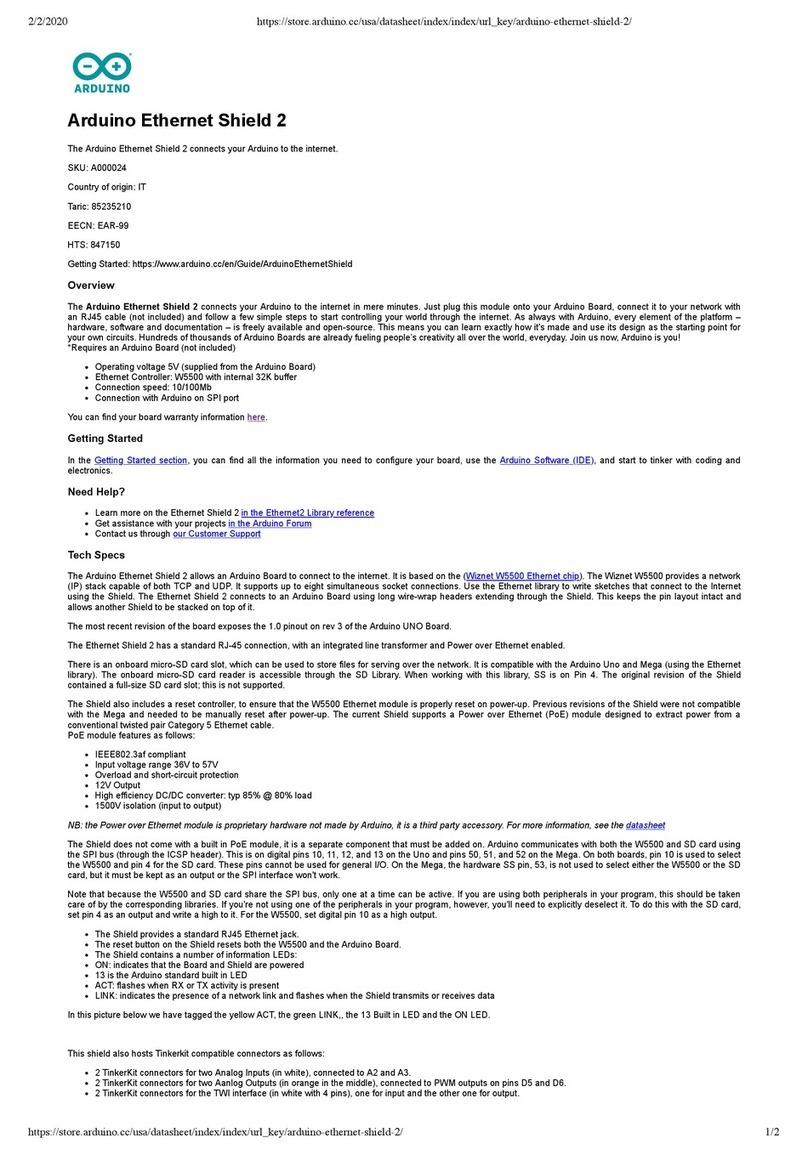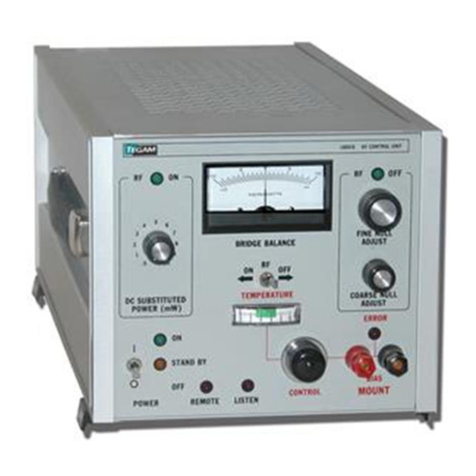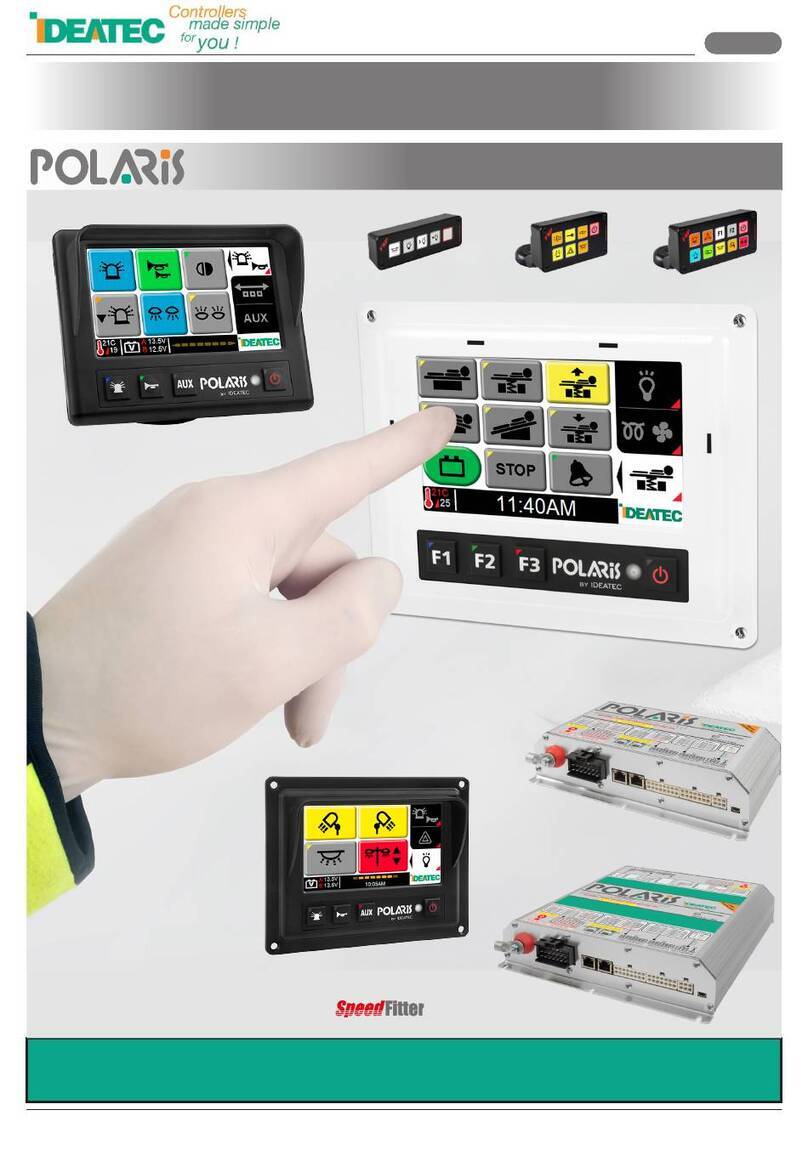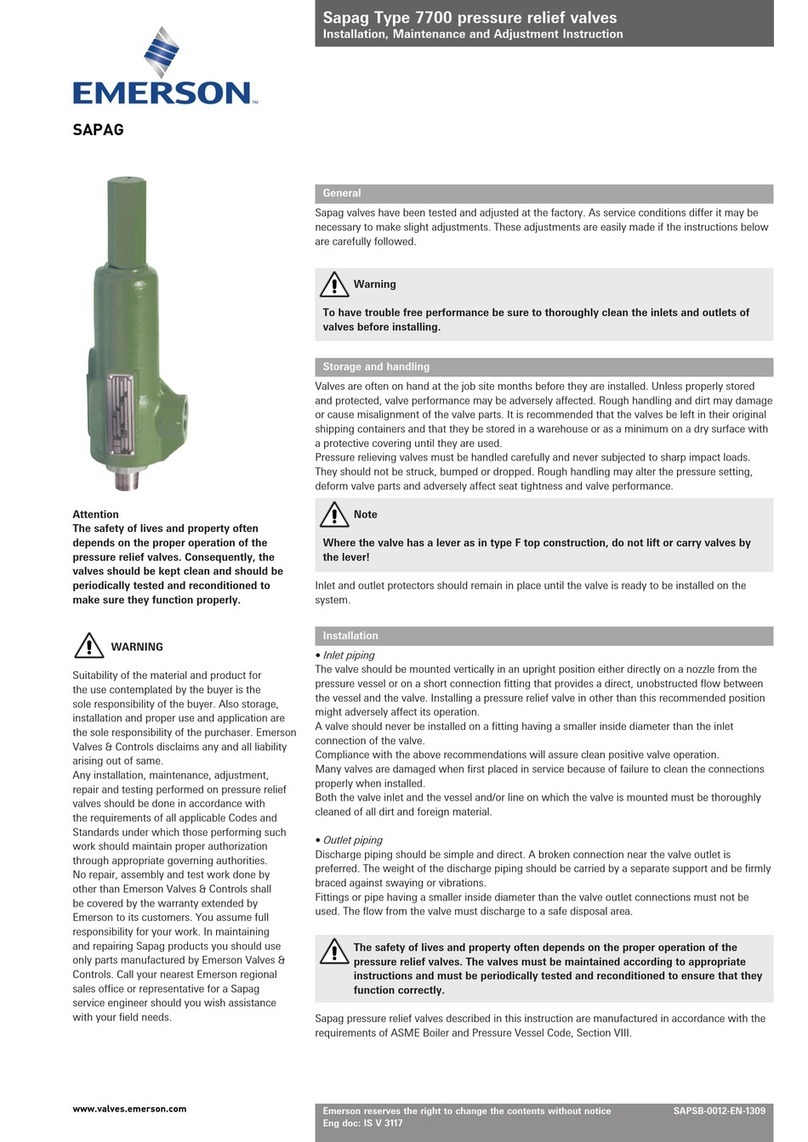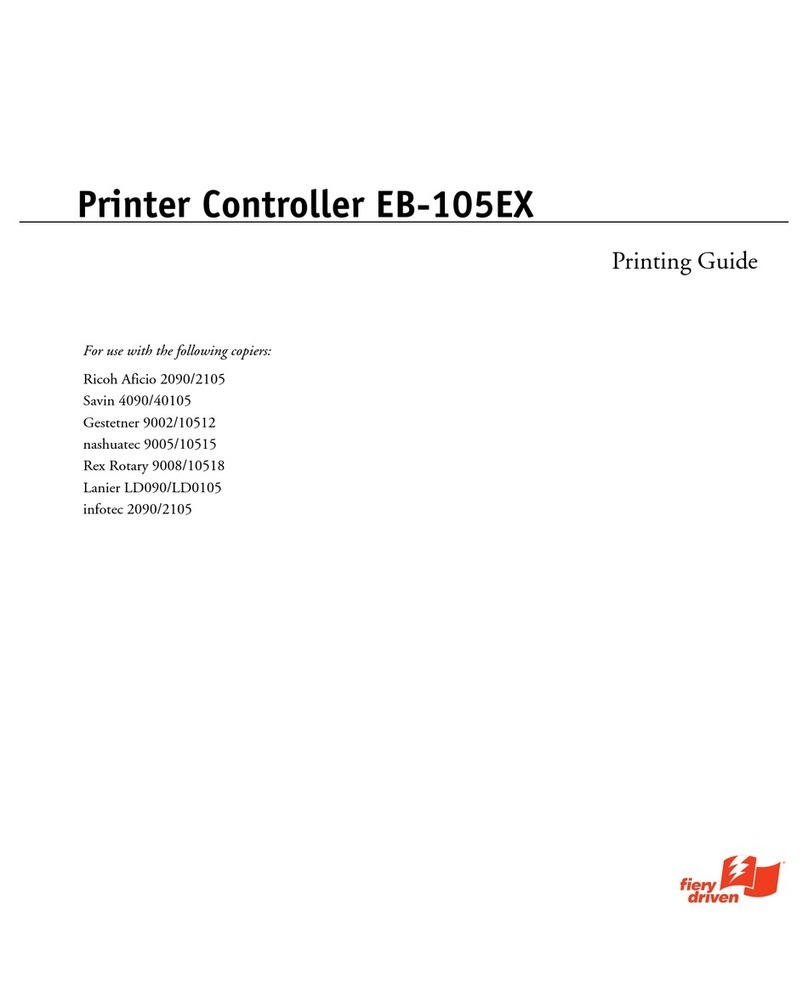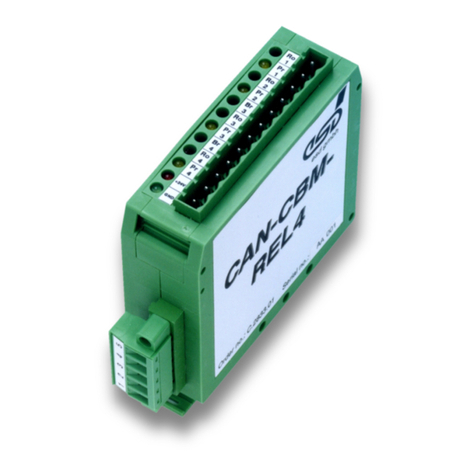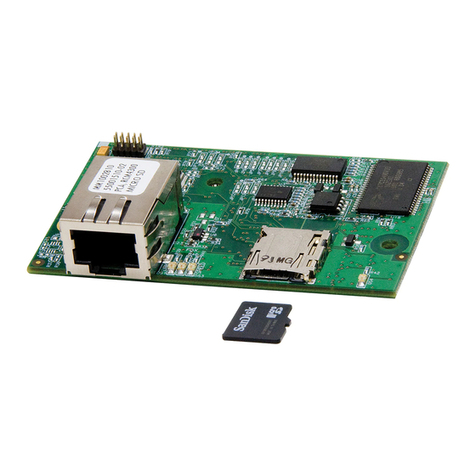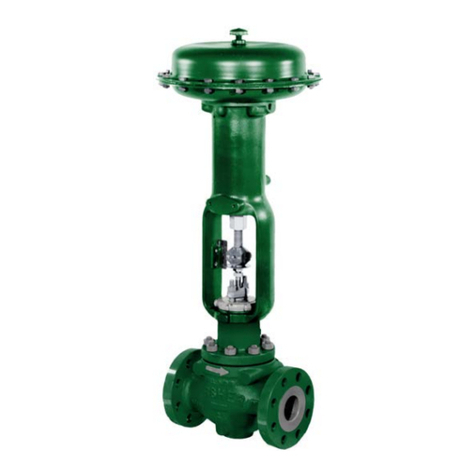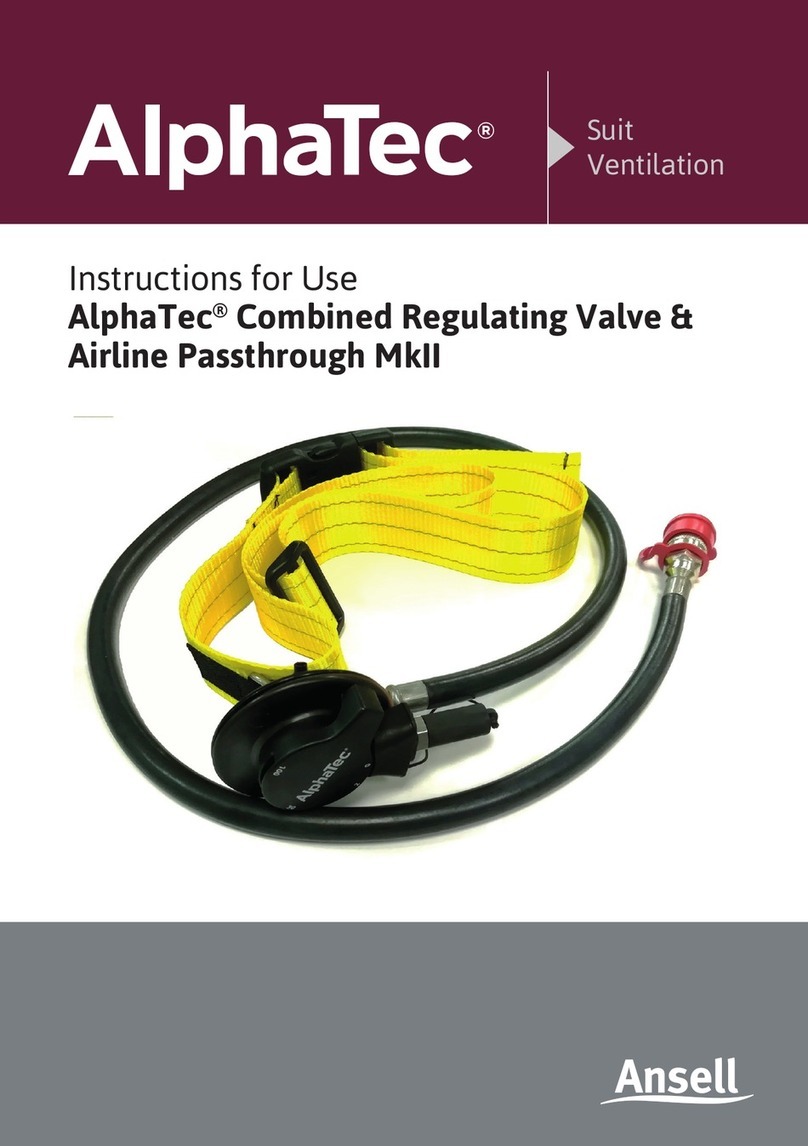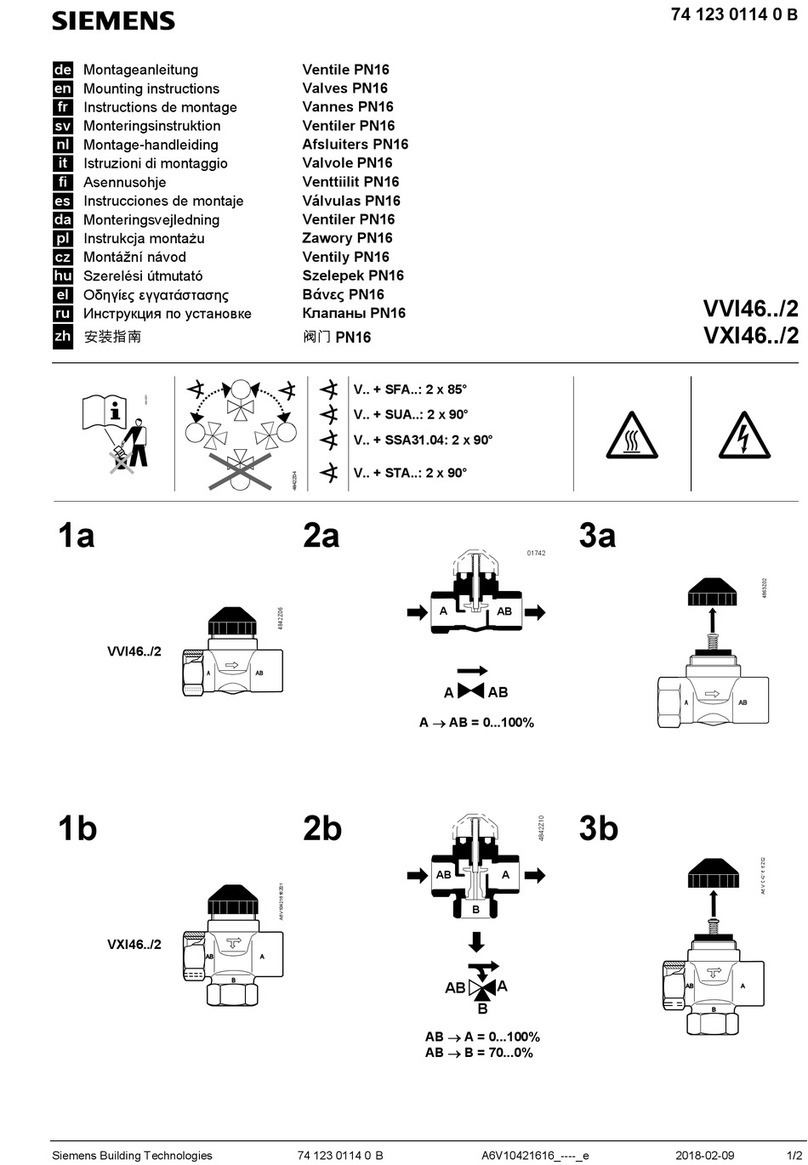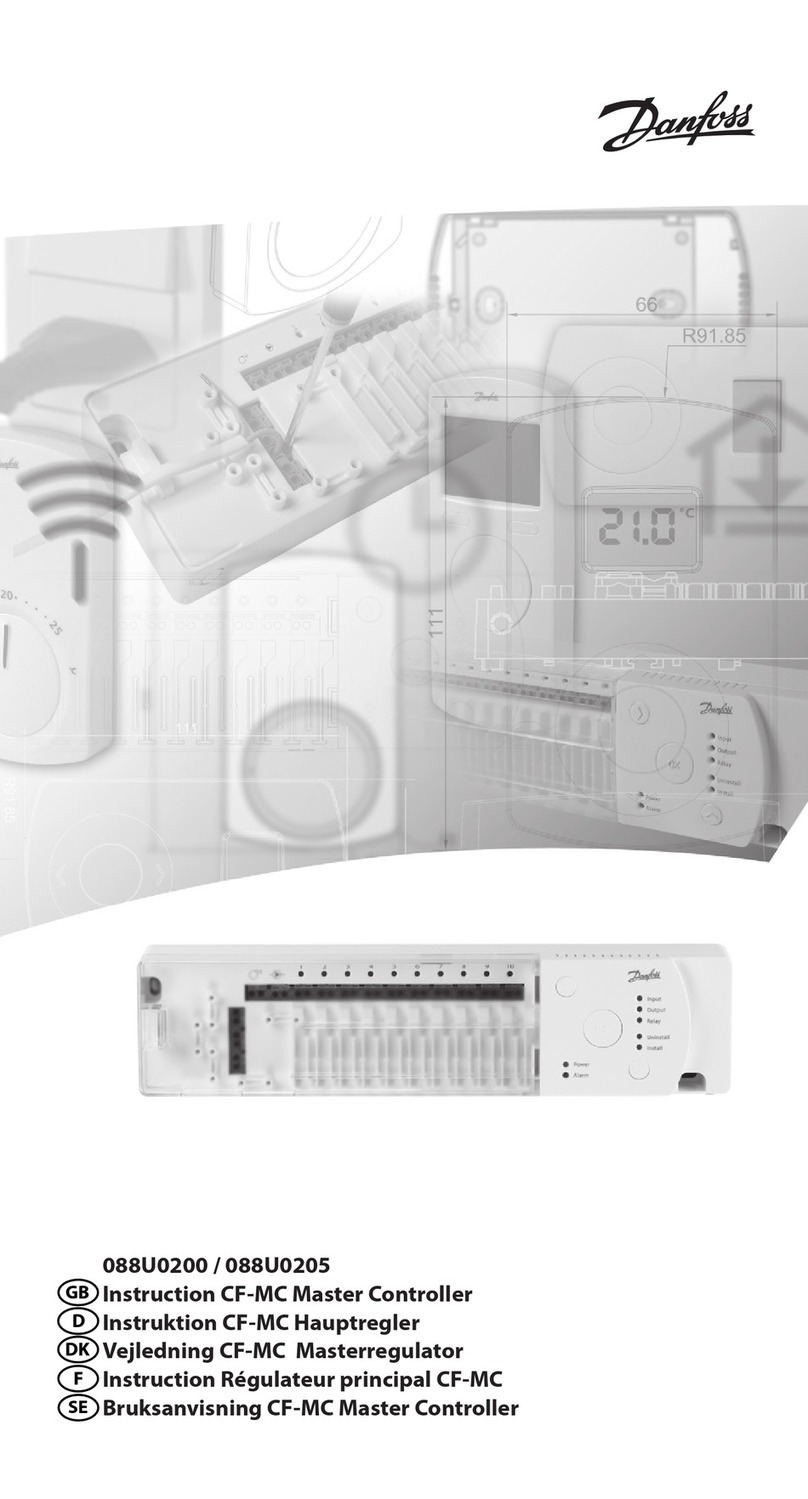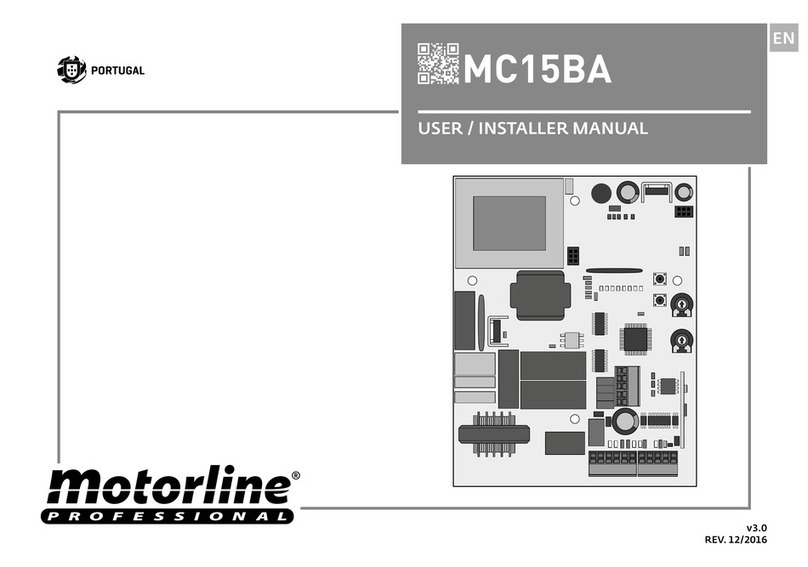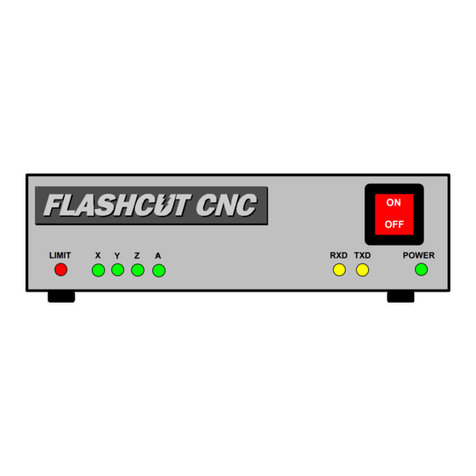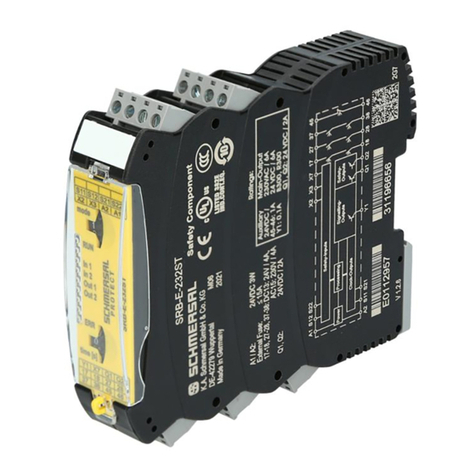ProCo 700 Series Instruction manual

Installation, Operation &
Maintenance Manual
Series 700
(Style 710, 711, 720, 730, 731, 740, 750, 790)
2431 North Wigwam Dr.
Stockton, CA 95205
Toll-Free Phone: 800-344-3246
Phone: 209-943-6088 (International)
Fax: 209-943-0242
Email: sales@procoproducts.com

Proco Products, Inc. IOMSeries700R3 Page 2 of 13
Table of Contents
1.0 Introduction ....................................................................................................................................... 3
1.1 Style 710/711: ProFlex Flanged Rubber Check Valve ................................................................. 3
1.2 Style 720: ProFlex Flanged In-Line Rubber Check Valve ........................................................... 3
1.3 Style 730/731: ProFlex Slip-On Rubber Check Valve ................................................................. 3
1.4 Style 740: ProFlex In-Line Slip-In Rubber Check Valve ............................................................. 3
1.5 Style 750: ProFlex Jacketed In-Line Flanged Rubber Check Valve ............................................. 4
1.6 Style 790: ProFlex Low Head Loss In-Line Rubber Check Valve ............................................... 4
2.0 Storage and Handling ........................................................................................................................ 5
2.1 Storage .......................................................................................................................................... 5
2.2 Handling ........................................................................................................................................ 5
3.0 Prior to Installation ........................................................................................................................... 5
3.1 Inspect the Received Check Valve ................................................................................................ 5
3.2 Verify the System Parameters ....................................................................................................... 5
3.3 Check Valve Mating Surface ........................................................................................................ 5
3.4 Safety Area .................................................................................................................................... 5
4.0 Installation ......................................................................................................................................... 6
4.1 ProFlex Check Valve Installation ................................................................................................. 6
4.1.1 Style 710/711: ProFlex Flanged Rubber Check Valve Installation ...................................... 6
4.1.2 Style 720: ProFlex Slip-In Flanged Rubber Check Valve Installation ................................. 7
4.1.3 Style 730/731: ProFlex Sleeved Rubber Check Valve Installation ....................................... 7
4.1.4 Style 740: ProFlex In-Line Slip-In Rubber Check Valve Installation .................................. 8
4.1.5 Style 750: ProFlex Jacketed In-Line Flanged Rubber Check Valve ............................................. 9
4.1.6 Style 790: ProFlex Low Head Loss Inline Rubber Check Valve Installation ..................... 10
4.1.7 Flange Bolt Torqueing (Style 710/720/750 & Flanged 790) .............................................. 11
4.1.8 Anchor Bolts/Pins (Style 730/740/790) .............................................................................. 11
5.0 Operation......................................................................................................................................... 12
6.0 Maintenance .................................................................................................................................... 12
7.0 Appendix A ..................................................................................................................................... 13
7.1 Torque Data ................................................................................................................................ 13
7.2 Sample Torqueing Patterns ......................................................................................................... 13

Proco Products, Inc. IOMSeries700R3 Page 3 of 13
1.0 Introduction
The Proco Series 700 ProFlex rubber check valves are designed to provide outstanding back-flow prevention; eliminating costly and
unwanted backflow from rivers, oceans, storm water, and is an excellent choice for sewage diffuser systems. The Proco Series 700 ProFlex
rubber check valves are fully passive flow devices requiring neither maintenance nor any outside sources of power or manual assistance to
operate. They are offered as direct replacements for ineffective and maintenance ridden flap-type check valves as well as for new/existing
construction and custom applications. Each check valve is manufactured to exacting specifications ensuring a perfect fit and usability and is
available in a wide variety of elastomers to meet the design requirements of the application. This installation, operation and maintenance
manual will cover the general practices for the proper installation, operation and maintenance of the Proco Series 700 ProFlex rubber check
valves.
1.1 Style 710/711: ProFlex Flanged Rubber Check Valve
This type of rubber check valve is designed to bolt directly to existing flanges or
new installations. Flanges are drilled to ANSI 125/150# standard but other drill
patterns are available upon request. This style of rubber check valve can be installed
in either vertical or horizontal applications. Available in a standard duck bill design
(Style 710) as well as an eccentric sloped bottom design (Style 711) for applications
requiring special installation clearances.
1.2 Style 720: ProFlex Flanged In-Line Rubber Check Valve
This type of rubber check valve is designed to fit directly inside of existing piping
systems. The design is supplied with a flat face rubber flange which allows
installation between existing pipe flanges eliminating the requirement for a valve
body. Flanges are drilled to ANSI 125/150# standard but other drill patterns are
available upon request. This style of rubber check valve can be installed in either
vertical or horizontal applications.
1.3 Style 730/731: ProFlex Slip-On Rubber Check Valve
This type of rubber check valve is designed to easily slip over an existing pipe and
is affixed to the pipe with heavy-duty stainless-steel clamps. This style of rubber
check valve can be installed in either a vertical or horizontal orientation for most
applications. Available in a standard duck bill design (Style 730) as well as an
eccentric sloped bottom design (Style 731) for applications requiring special
installation clearances. Note: External Clamp shown is of a general style and will
change depending on the size of the supplied check valve.
1.4 Style 740: ProFlex In-Line Slip-In Rubber Check Valve
This type of rubber check valve is designed to slip directly inside of an existing pipe and is supplied with a stainless-steel
expandable clamp to secure in place. This style of rubber check valve can be installed in either a vertical or horizontal
orientation for most applications.
Figure 4: Style 740
Figure 1: Style 710/711
Figure 2: Style 720
Figure 3: Style 730/731

Proco Products, Inc. IOMSeries700R3 Page 4 of 13
1.5 Style 750: ProFlex Jacketed In-Line Flanged Rubber Check Valve
This type of rubber check valve is designed with a full metal enclosure (Style 750 Shroud) which allows easy installation in
existing piping systems. Flanges are drilled to ANSI 125/150# standard but other drill patterns are available upon request.
Figure 5: Style 750 Check Valve
1.6 Style 790: ProFlex Low Head Loss In-Line Rubber Check Valve
This type of rubber check valve is designed to slip directly inside of an existing pipe with the supplied stainless-steel expandable
clamp or retaining ring to secure in place; it can be fastened from either the inlet or discharge end of the valve. The standard
Style 790 valve must be installed in a truly round pipe. Out of round pipe may cause distortion of the valve causing valve
failure.
Figure 6: ProFlex Style 790 Low Head Loss In-Line Rubber Check Valve
Figure 7: ProFlex Style 790 Low Head Loss Flanged In-Line Rubber Check Valve
Note: For flanged versions of the ProFlex Style 790 Low Head Loss In-Line Rubber Check Valves the integrated rubber flange
can be located on either the inlet or discharge end depending on required installation orientation.

Proco Products, Inc. IOMSeries700R3 Page 5 of 13
2.0 Storage and Handling
2.1 Storage
2.1.1 Inside
The ideal storage location for a Proco Series 700 ProFlex rubber check valve is in a warehouse setting with a
relatively dry and cool location. Store the check valve in a vertical position on a pallet or wooden platform
similar to as shown in Figure 5 below.
Figure 8: Typical Check Valve Storage Position
2.1.2 Outside
If the rubber check valve is to be stored outside, keep the check valve protected in a waterproof crate until ready
for installation. Keep the check valve protected from any external elements such as direct UV exposure. Do not
lay other boxes on top of the check valve or check valve box.
2.2 Handling
Care should be taken when handling the Proco Series 700 ProFlex rubber check valves whether big or small to reduce the
possibility of damaging the check valve during installation. For large size check valves, special care should be taken in loading,
hoisting, and lowering; being careful not to hit adjacent equipment, forklift tines, crane cables, etc. Style 710 & 730 check valves
36” and larger are manufactured with a lifting support hole to assist in the safe and proper lifting/installation of these check
valves. The lifting support holes are not intended to support the entire weight of the check valve and care must be taken to
adequately support the cuffed or flanged end as well. Note: Proco Products, Inc. will not be responsible or liable for damage to
the rubber check valve, adjacent equipment, or injury to personnel if these steps are not taken.
3.0 Prior to Installation
3.1 Inspect the Received Check Valve
ProFlex check valves are fully inspected at the factory and are carefully packaged to arrive at the job site ready for installation.
Upon receipt of the check valve(s), inspect for damage that may have occurred during transportation and immediately contact
your transportation company to report any damage. Check the item(s) received against the packing slip to ensure that all items
have been received. For any questions or concerns about the received product contact your Agent or Proco Products, Inc. at
[email protected] or for immediate assistance call (800) 344-3246 (US/Canada) or (209) 943-6088 (International).
3.2 Verify the System Parameters
Check the system design parameters for the application to ensure the specified/supplied Proco Series 700 rubber check valve(s)
will meet the system requirements.
3.3 Check Valve Mating Surface
Inspect the mating flange/surface to ensure that it is undamaged and clean and free of all foreign matter before installation of the
check valve. For slip-on style of rubber check valves, the mating pipe must be free of sharp edges which may damage the inside
sealing diameter of the check valve.
3.4 Safety Area
Always check your work area before installation for safety hazards which may cause injury or damage to personnel or product.
Develop and discuss a safety and exit plan for you and your fellow employees in the event of an emergency.

Proco Products, Inc. IOMSeries700R3 Page 6 of 13
4.0 Installation
Note: Each Proco Series 700 ProFlex rubber check valve installation can be considered a major pipe installation and the same safety
requirements as used in pipe contracting installations should be implemented. Each Proco Series 700 ProFlex rubber check valve
regardless of size should be installed in the same manner. Proco Products, Inc. will accept no responsibility for an improperly installed
ProFlex rubber check valve(s) or the improper use of this product. Incorrect installation may result in injury to personnel, reduced check
valve service life and/or damage to other adjacent equipment.
4.1 ProFlex Check Valve Installation
4.1.1 Style 710/711: ProFlex Flanged Rubber Check Valve Installation
4.1.1.1 Step 1: Align
Position/Align the Flanged Rubber check valve into the system. For horizontal applications the bill
of the check valve should be in vertical orientation relative to the ground unless there are clearance
issues. For the Style 711 eccentric sloped bottom design the eccentric slop to be positioned at the
bottom or 6 o’clock position of the valve installation. In the case of clearance issues the check valve
may be rotated to a maximum of 35 degrees to allow clearance to the ground.
Figure 9: Style 710/711 Installation Step 1
4.1.1.2 Step 2: Retaining Rings
Position the split retaining rings onto the flange of the check valve. Use a flat washer to properly
cover the split in the retaining ring.
Figure 10: Style 710/711 Installation Step 2
4.1.1.3 Step 3: Flange Bolting
Insert the flange bolting and tighten the flange bolting hardware to a “snug” tight fit before
torqueing. Proceed to section 4.1.7 for proper bolt torqueing and a sample torqueing pattern.
Figure 11: Style 710/711 Installation Step 3

Proco Products, Inc. IOMSeries700R3 Page 7 of 13
4.1.2 Style 720: ProFlex Slip-In Flanged Rubber Check Valve Installation
4.1.2.1 Step 1: Insert
Insert the Slip-In flanged rubber check valve into the existing pipe. For horizontal applications the
bill of the check valve should be installed in a vertical orientation in the mating pipe as shown in
below in Figure 9.
Figure 12: Style 720 Installation Step 1
4.1.2.2 Step 2: Attach
Re-attach the 2 mating pipe flanges.
Figure 13: Style 720 Installation Step 2
4.1.2.3 Step 3: Flange Bolting
Add the flange bolting to the installation and tighten to a “snug” tight fit before torqueing. Proceed
to step 4.1.7 for proper bolt torqueing and a sample torqueing pattern.
Figure 14: Style 720 Installation Step 3
4.1.3 Style 730/731: ProFlex Sleeved Rubber Check Valve Installation
4.1.3.1 Step 1: Slip-On
For Slip-On rubber check valves, slip the rubber check valve over the existing pipe. For horizontal
applications the bill of the check valve must be installed in a vertical orientation relative to the
ground unless there are clearance issues. For the Style 731 eccentric sloped bottom design the
eccentric slop to be positioned at the bottom or 6 o’clock position of the valve installation. In the
case of clearance issues the check valve may be rotated to a maximum of 35 degrees to allow
clearance to the ground. To ease installation, it is acceptable but not necessary to add soapy water to
the exterior of the pipe to facilitate the installation of the check valve.
Figure 15: Style 730/731 Installation Step 1

Proco Products, Inc. IOMSeries700R3 Page 8 of 13
4.1.3.2 Step 2: External Clamps
Add the external clamps to the slip-on rubber check valve. For nominal diameters less than or equal
to 10” the check valve will be supplied with either T-Bolt or Worm Gear Clamps. For nominal
diameters greater than 10”, the check valve(s) will be supplied with fabricated stainless-steel
clamp(s). If the valve is supplied with more than one fabricated stainless-steel clamp, then rotate the
additional clamps which will place the clamping section at opposite angles from the first clamp. This
will ensure that even pressure is applied to the valve. Note: The supplied number of clamps will vary
depending on size and application.
Figure 16: Style 730/731 Installation Step 2
4.1.3.3 Step 3: Tighten Clamps
Tighten the external clamp until the rubber is
compressed by the external clamp and a tight fit
is achieved then proceed to section 4.1.8 for
anchor bolting/pinning to anchor the slip-on
check valve to the mating piping.
4.1.4 Style 740: ProFlex In-Line Slip-In Rubber Check Valve Installation
4.1.4.1 Step 1: Slip-In
Insert the slip-in check valve inside the existing pipe. For horizontal applications the bill of the
check valve must be installed in vertical orientation as shown below in Figure 15.
Figure 18: Style 740 Installation Step 1
4.1.4.2 Step 2: Insert Clamp
Insert and the expandable internal clamp into the rubber check valve. For dry or hot installations, it
is recommended to apply a layer of lubricant (such as Dow Corning 111 Compound) to the internal
expandable clamp to assist in proper placement and sealing of the clamp.
Figure 19: Style 740 Installation Step 2
Figure 17: Style 730/731
Installation Step
3

Proco Products, Inc. IOMSeries700R3 Page 9 of 13
4.1.4.3 Step 3: Expand Clamp
Tighten the expandable internal clamp until the stainless-steel portion of the clamp has embedded
itself into the rubber cuff of the valve. Once the clamp has been sufficiently held in place tap the
clamp with a 4-5 pound hammer on the inner section of the clamp in a circular motion to further
embed the clamp into the rubber. Re-tighten the clamp to ensure a proper seal. Once the clamp is
properly sealed, tighten the lock nut on the internal expandable clamp and proceed to section 4.1.8
for anchor bolting/pinning to anchor the slip-in check valve to the mating pipe. When installing
multiple internal expandable clamps ensure the clamps are evenly spaced/rotated to provide even
clamping pressure as well as with the internal expandable fasteners located in a position that
minimizes flow interference. Note: This style of check valve installation relies on external pressure
of the internal expandable clamp to ensure that the valve does not move, care should be taken to
ensure proper sealing. When installing the check valve on corrugated pipe the clamp(s) shall be
positioned at the lowest part of corrugation, at the minimum ID of the pipe.
Figure 20: Style 740 Installation Step 3
4.1.5 Style 750: ProFlex Jacketed In-Line Flanged Rubber Check Valve Installation
4.1.5.1 Step 1: Align/Insert
Align/Insert the Style 750 Assembly into the required breach opening noting the position of flow and
orientation of the valve. The assembly should be installed to where the top notation on the style 750
shroud is in the vertical position as shown in Figure 21. Use a gasket where required, supplied by
others. Note: Ensure the bill of the check valve is in the vertical position when installed.
Figure 21: Style 750 Installation Step 1
4.1.5.2 Step 2: Flange Bolting
Secure the Style 750 assembly to the mating flanges with the appropriate flange bolting hardware.
Follow the procedures in section 4.1.7 for proper flange bolt torqueing.
Figure 22: Style 750 Installation Step 2

Proco Products, Inc. IOMSeries700R3 Page 10 of 13
4.1.6 Style 790: ProFlex Low Head Loss Inline Rubber Check Valve Installation
4.1.6.1 Slip In Style 790
4.1.6.1.1 Step 1: Insert Valve
The 790 valve must be installed in a
horizontal pipe and will be supplied with
a “FLOW” direction label and a “TOP”
label to ensure proper installation
orientation within the pipe. Insert the
slip-in check valve inside the existing
pipe and push until inlet/discharge end is
flush with end of pipe.
4.1.6.1.2 Step 2: Insert Clamp
Insert the expandable internal clamp(s) into
the rubber check valve in either the inlet or
discharge end depending on installation
orientation and ensuring that the adjustable
bolts are located at the top of the valve.
When installing multiple internal expandable
clamps ensure the clamps are evenly spaced/
rotated to provide even clamping pressure as
well as the internal expandable fasteners
located in a position that minimizes flow
interference. For dry or hot installations, it is
recommended to apply a layer of lubricant (such as Dow Corning 111 Compound) to the
internal expandable clamp to assist in proper placement and sealing of the clamp.
4.1.6.1.3 Step 3: Expand Clamp
Tighten the expandable internal clamp until the
stainless-steel portion of the clamp has
embedded itself into the rubber cuff of the
valve. Once the clamp has been sufficiently
held in place tap the clamp with a 4-5 pound
hammer on the inner section of the clamp in a
circular motion to further embed the clamp
into the rubber. Re-tighten the clamp to ensure
a proper seal. Once the clamp is properly
sealed, tighten the lock nut on the internal
expandable clamp and proceed to section 4.1.8
for anchor bolting/pinning to anchor the check valve to the mating pipe. Note: This style
of check valve installation relies on external pressure of the internal expandable clamp to
ensure that the valve does not move, care should be taken to ensure proper sealing. When
installing the check valve on corrugated pipe the clamp(s) shall be positioned at the
lowest part of corrugation, at the
minimum ID of the pipe.
4.1.6.2 Flanged Style 790
4.1.6.2.1 Step 1: Insert
The 790 valve must be installed in a
horizontal pipe and will be supplied with
a “FLOW” direction label and a “TOP”
label to ensure proper installation
orientation within the pipe. Insert the
slip-in flanged check valve inside the
existing pipe and push until flanged
inlet/discharge end is flush with end of pipe. Note: Style 790 Flanged Check Valve can
be supplied with the integrated rubber flange in the inlet or discharge position depending
on the required installation parameters.
Figure 25: Style 790 Installation Step 3
Figure 23: Style 790 Installation Step 1
Figure 26: Style 790 Flanged Installation
Step 1
Figure 24: Style 790 Installation Step 2

Proco Products, Inc. IOMSeries700R3 Page 11 of 13
4.1.6.2.2 Step 2: Retaining Ring & Bolting Installation
Attach and secure the retaining ring in place with the flange bolting hardware and
proceed to section 4.1.7 for flange bolt torqueing
Figure 27: Style 790 Flanged Installation Step 2
4.1.7 Flange Bolt Torqueing (Style 710/720/750 & Flanged 790)
Torqueing should then be accomplished in steps gradually
and as evenly as possible around the circumference of the
flange. The bolts should be tightened in an alternating
sequence similar to a star pattern shown below in Figure 28
to within the proper torque range specified for the size of
check valve to be installed. The flange bolting is not
considered tight and “locked-on” until the edges of the check
valve flange bulges out or extrudes slightly. Refer to
appendix A for the proper ranges of torque values as well as
further examples of the proper patterns used for torqueing the
flange bolting. Note: Never tighten bolts on a flanged rubber
check valve to the point where there is contact between the
retaining ring and mating flange. This type of tightening will
crush the integrated rubber flange of the check valve and
cause a premature failure.
4.1.8 Anchor Bolts/Pins (Style 730/731/740/790)
After the Check Valve is installed, drill a hole or holes, depending on the valve size number of clamps, through
the cuff of the check valve and into the mating pipe using the center hole on the clamp as a guide. Insert a bolt,
which will be sufficient in length to completely travel through the clamp, valve and mating pipe. Completely
weld or use some other means of ensuring that this bolt/pin will not fall out or be removed.
Figure 29: Style 730, 731, 740 & 790 Typical Drilled Through Hole Positions
Figure 28: Sample Flange Torqueing
Sequence

Proco Products, Inc. IOMSeries700R3 Page 12 of 13
4.1.8.1 Style 730/731: Insert the Bolt/Pin through the drilled hole(s) and completely weld or use some other
means of ensuring that this bolt/pin will not fall out or be removed from the expandable clamp.
Figure 30: Style 730/731 Anchor Bolt/Pin Install
4.1.8.2 Style 740: Insert the Bolt/Pin through the drilled hole(s) and completely weld or use some other
means of ensuring that this bolt/pin will not fall out or be removed from to the internal expandable
clamp.
Figure 31: Style 740 Anchor Bolt/Pin Installation
4.1.8.3 Style 790: Insert the Bolt/Pin through the drilled hole(s) and completely weld or use some other
means of ensuring that this bolt/pin will not fall out or be removed from to the internal expandable
clamp.
Figure 32: Style 790 Anchor Bolt/Pin Installation
5.0 Operation
The ProFlex Series 700 Check Valves require little operational requirements. Each unit is an elastomeric back flow device which relies
solely on inlet flow pressure and back flow pressure to provide operation.
6.0 Maintenance
ProFlex Series 700 Check Valves require little maintenance. Periodic inspections can ensure that the check valve will provide years of
maintenance-free service. Check for cuts or gouges which can easily be repaired with a self-curing rubber compound (Contact Proco).
Ensure that the bill section is free from any debris that may have been lodged in the bill. This will be the only areas of concern that require
periodic inspection.

Proco Products, Inc. IOMSeries700R3 Page 13 of 13
7.0 Appendix A
7.1 Torque Data
Table 1: Style 710/730/750/790 Flange Torque Values
Size Approx. Torque Values
1" thru 2" 20 - 40 ft./lbs.
2.5" thru 5" 25 - 60 ft./lbs.
6" thru 12" 35 - 140 ft./lbs.
14" thru 18" 50 - 180 ft./lbs.
20" thru 24" 60 - 200 ft./lbs.
26" thru 40" 70 - 300 ft./lbs.
42" thru 50" 80 - 300 ft./lbs.
52" thru 60" 100 - 400 ft./lbs.
66" thru 72" 200 - 500 ft./lbs.
78" thru 90" 300 - 600 ft./lbs.
96" thru 108" 400 - 700 ft./lbs.
120" 500 - 800 ft./lbs.
7.2 Sample Torqueing Patterns
Figure 33: Sample Torque Patterns
This manual suits for next models
8
Table of contents
